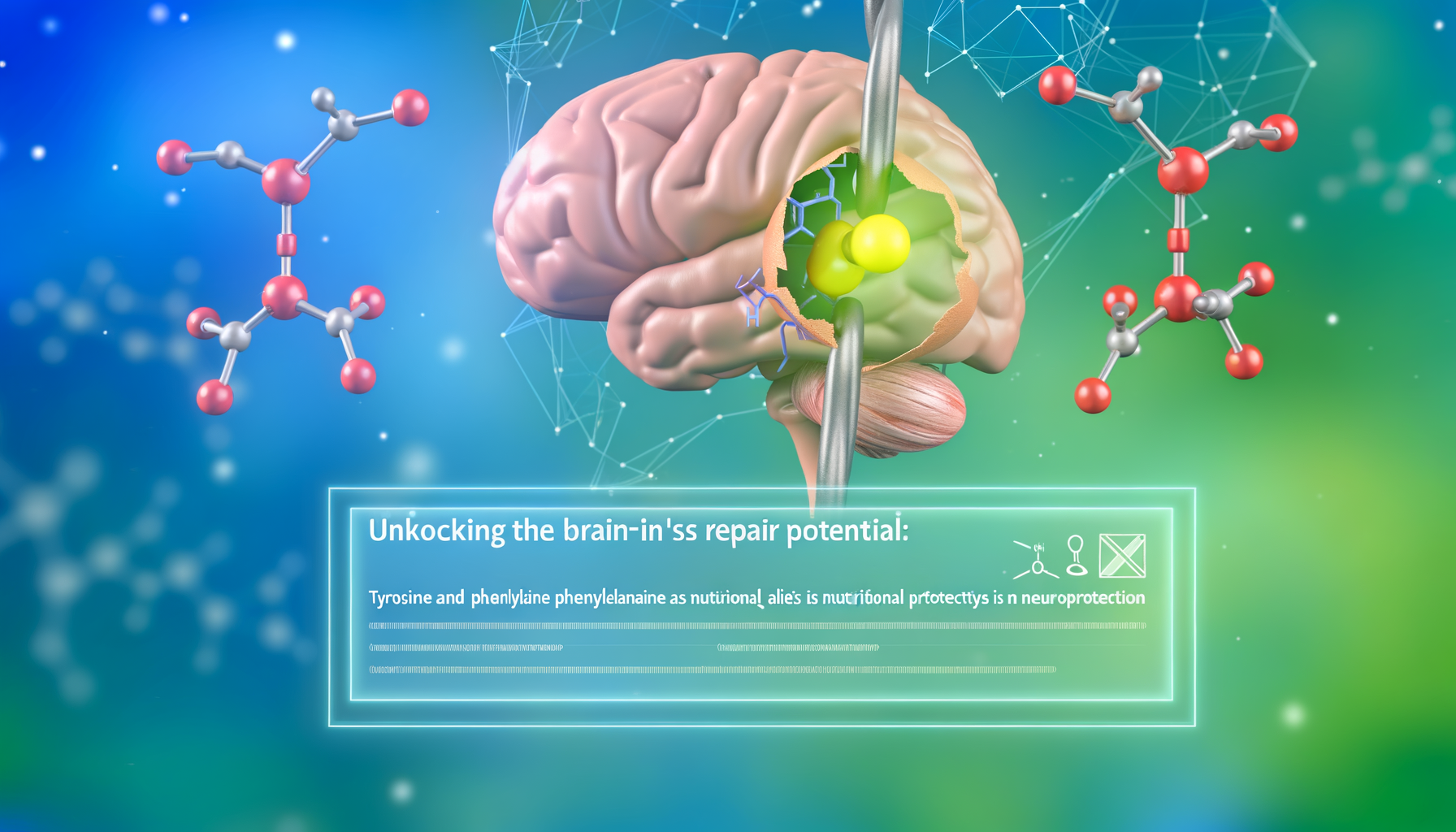Title: Tyrosine and Phenylalanine: Their Dual Roles in Neuronal Health and Potential as Dietary Supplements
Article Selection and Core Summary:
The study titled "Tyrosine and Phenylalanine Activate Neuronal DNA Repair but Exhibit Opposing Effects on Global Transcription," published in IUBMB Life (2025), explores how two amino acids, tyrosine and phenylalanine, impact neuronal function. Researchers Megha Jhanji et al. investigated how these amino acids influence DNA repair and transcription processes in brain cells, focusing on implications for neurodegenerative conditions such as Alzheimer's disease.
Core Claims and Methodology:
- Claims: Tyrosine and phenylalanine enhance DNA repair in neurons but affect global transcription differently. Tyrosine tends to inhibit transcription, whereas phenylalanine stimulates it. This dichotomy suggests that the amino acids have nuanced roles in neuronal maintenance.
- Methodology: The team used a combination of genetic models (including knockout mice) and biochemical assays to assess the effects on DNA repair mechanisms and transcription processes. Neuronal cultures were treated with tyrosine and phenylalanine, while various genetic markers and proteins were measured to analyze their specific impacts.
Main Findings:
- Both amino acids activated DNA repair pathways, offering protection against certain neurotoxins.
- Tyrosine recruitment led to chromatin binding with topoisomerase 1, inhibiting overall transcription.
- Phenylalanine promoted topoisomerase 2 beta binding, stimulating transcription.
- Treatments with cis-resveratrol helped mitigate tyrosine’s transcriptional inhibition.
Background Knowledge and Context:
Understanding Amino Acids and their Importance:
Amino acids are building blocks of proteins, pivotal in countless bodily processes. Tyrosine and phenylalanine, considered "aromatic" due to their structure, hold vital roles in neurotransmitter production—influencing mood, cognition, and overall brain health.
DNA Repair & Transcription in Neurons:
DNA repair is crucial for maintaining genetic stability, especially in neurons which are less capable of regeneration compared to other cells. Transcription—the first step of gene expression—influences how cells perform tasks and respond to stimuli.
Analysis of Research Significance and Practical Applications:
Scientific and Medical Significance:
The research highlights the dual role these amino acids play, pivotal for understanding aging and age-related disorders like Alzheimer’s. The study offers a new perspective on how dietary components can influence brain health at a molecular level.
Practical Applications:
- Dietary Supplements: Potential development of personalized nutritional therapies targeting age-related cognitive decline. Supplements containing optimized doses of these amino acids could support DNA repair mechanisms while balancing transcriptional activities.
- Functional Foods: Incorporating tyrosine and phenylalanine in functional foods, similar to "brain health" smoothies or bars, could provide neuroprotective benefits.
Personal Expert Opinion and Future Outlook:
Expert Insights on Limitations and Future Research:
The study comprehensively elucidates the biochemical roles of tyrosine and phenylalanine, yet it is limited by its primary focus on animal models. Human studies are required to corroborate these findings and determine appropriate therapeutic dosages.
Future Developments:
Further research could explore:
- Long-term effects of these amino acids in human populations.
- The interplay between these amino acids and other nutrients in a dietary context.
- Broader implications for other neurodegenerative diseases.
Conclusion:
This groundbreaking study sheds light on the sophisticated relationship between diet, biology, and brain health. As the field of nutritional neuroscience evolves, incorporating amino acids like tyrosine and phenylalanine into therapeutic strategies holds promising potential for enhancing cognitive function and longevity.
For those interested in delving deeper into this study, you can refer to the original publication at NCBI PubMed.
